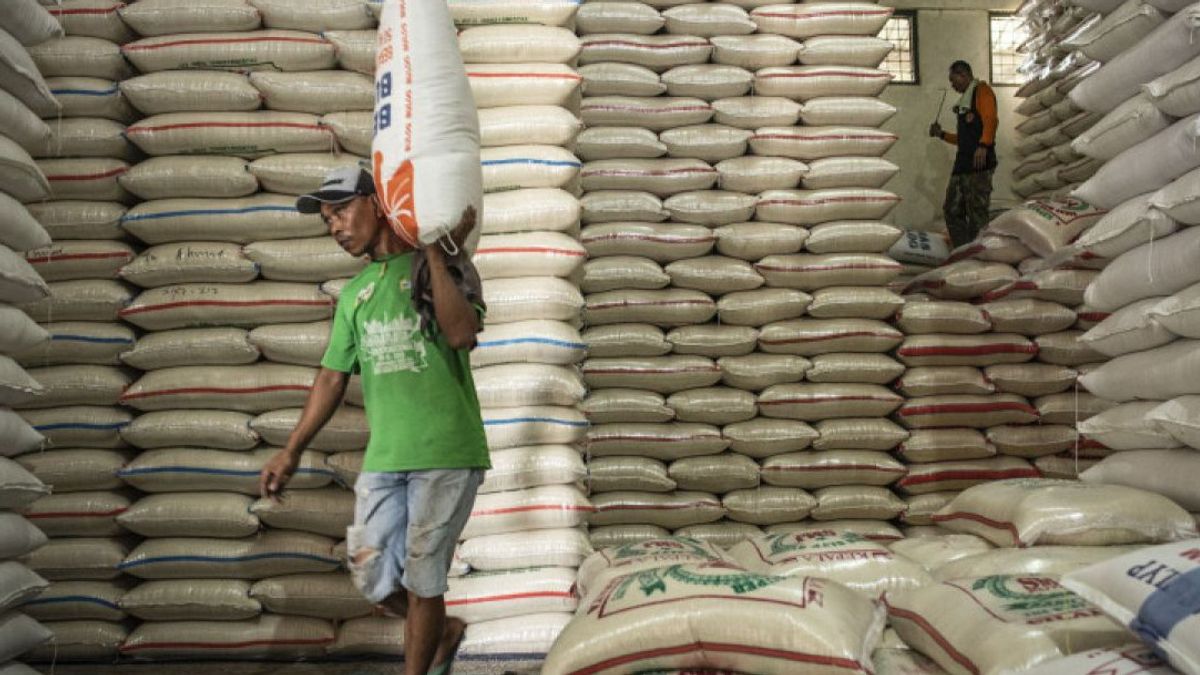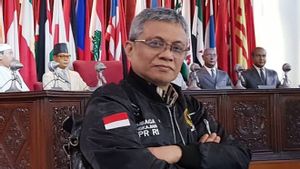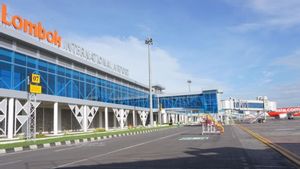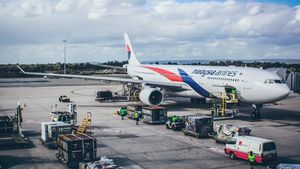JAKARTA - The Ministry of Agriculture is optimistic that the shortage of rice supply in Indonesia due to the influence of El Nino or the long dry season which has an impact on reducing rice production in Indonesia, can be fulfilled in 2024.
Head of the Agricultural HR Counseling and Development Agency (BPPSDMP) of the Ministry of Agriculture Dedi Nursyamsi in Lawang, Malang Regency, East Java, Wednesday, June 5, said that Indonesia experienced a deficit of 3.5 million tons of rice.
"In 2023 we are short of 3.5 million tons of rice. This means that the planting area must be increased, increase the planting area and increase the planting index," said Dedi, quoted from Antara.
Dedi explained that national rice consumption per month reached 2.6 million tons or approximately 31.5 million tons per year. However, in 2023, rice production in Indonesia was only 30.2 million tons, down from the previous year which was 31.5 million tons.
The decline in rice production, he continued, was the impact of the long dry season caused by El Nino. With this condition, Indonesia experienced a deficit or a shortage of approximately one million tons of rice supply.
"Our rice production will be in 2023, 30.2 million tons. That means, for consumption only less than one million tons. Not yet for the Government Rice Reserve (CBP) 2.5 million tons. In total, the shortage of rice per year is around 3.5 million tons. That is the current condition of Indonesia," he said.
He added that in dealing with these conditions, it is necessary to expand planting and increase the planting index (IP), such as in swamplands and rain fields, so that rice production returns to abundant.
Currently, the Ministry of Agriculture is focusing on boosting the production of two main commodities, namely rice and national corn through optimizing swampland, pumping, and overlapping gogo rice on plantation land.
Optimizing swampland, he continued, is currently being carried out in 11 provinces with a target of increasing IP 100 to 200 for areas conducted by investigative and design surveys (SID).
Optimizing the swampland, carried out in a number of areas, including South Kalimantan, Central Kalimantan, West Kalimantan, Aceh, North Sumatra, South Sumatra, Lampung, Bengkulu, Jambi and in South Sulawesi.
"Our swampland generally only grows once a year. If we increase the IP from one to two in one year, it means we have to optimize the land. We have to repair the canals and so on," he said.
Another effort, the Ministry of Agriculture also carried out a pumping program on rice fields that were close to water sources. The program will be carried out in Java and outside Java.
SEE ALSO:
The Ministry of Agriculture will provide assistance as many as 90 thousand water pump units for the pumping program. Currently, for the realization of the water pump assistance, as many as 25 thousand water pumps have been distributed.
"We have a rain area of 3-4 million hectares, which has only been planted once a year. If we increase the IP to twice, our production will also increase," he added.
Furthermore, the Ministry of Agriculture is also promoting the overlap of gogo rice insertions on oil palm and coconut plantations that are currently participating in the People's Palm Oil Rejuvenation (PSR) program. The Ministry of Agriculture said there were approximately 500 thousand hectares of land for the implementation of the scheme.
"From that program, a total of approximately two million hectares, if the productivity is four tons per hectare, then there are eight million tons of GKG, equivalent to four million tons of rice, while our shortage is 3.5 million. We can self-sufficiency," he said.
The English, Chinese, Japanese, Arabic, and French versions are automatically generated by the AI. So there may still be inaccuracies in translating, please always see Indonesian as our main language. (system supported by DigitalSiber.id)














